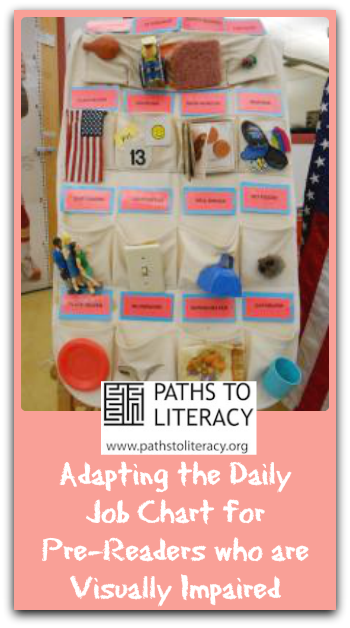Adapting the Daily Job Chart for Full Inclusion
To allow for pre-readers with visual impairments to be included on all aspects of the daily job chart (independent choice, knowledge of the options and awareness of peer's choices) I pair the object with the large print and brailled description. I use items that go with the current them (right now we are doing a construction theme) and choose one to represent each child: Mario = the hammer; Eddie = the pliers; Kaity = the screw driver....etc. The children put the item that represents them in the pocket under the descriptor/representative object. This gives them exposure to the tools in the tool box as well as the daily jobs on the chart.
- Braille and print labels for each job
- Objects that represent each job
- A canvas or plastic shoe storage
- Objects that relate to the classroom's current them to represent each child
- Hot glue
Glue the object that represents each job on the outside of the pocket. Over the pocket place the braille/print label. Choose objects that represent each child in the classroom according to the current theme. (eg. tools, fruits/vegetables, shapes, farm animals, etc.) Allow the children to retrieve their object from the tool box/basket and independently choose their job. While exploring the job chart they are able to find out what their peers have chosen and can discuss their choices with them.

